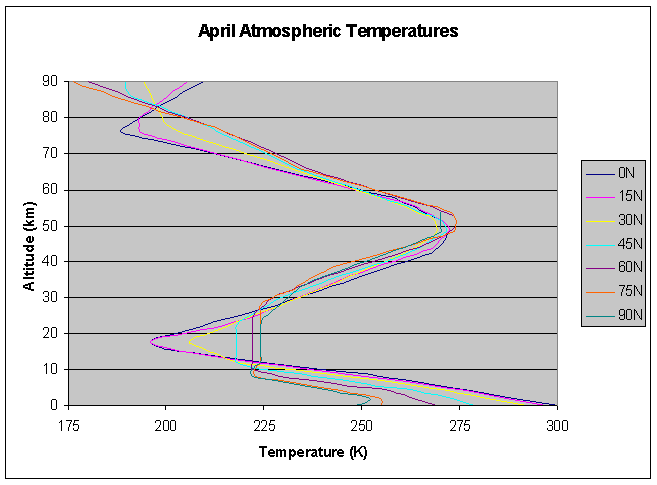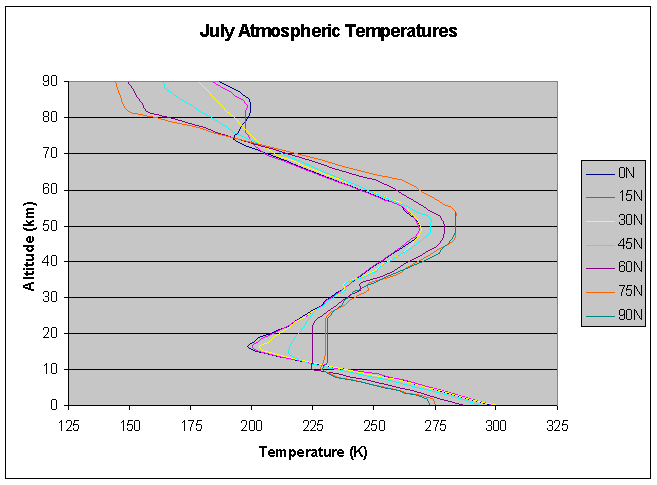

The graph above shows the temperatures for different latitudes in the atmosphere. This is a plot of January for the Northern Hemisphere. The interesting thing here is the higher variability the closer to the equator we go. The temperature decreases for all levels till about 11km when we reach the tropopause here the temperature remains fairly constant known as an isothermal zone. This is where the stratosphere begins. The stratosphere is an inversion layer where the temperature increases with height till about 50km. At 50km the stratopause is located with an isothermal layer where we transistion into the mesosphere. The mesosphere is a layer where the temperature decreases with height. At about 84km the temperature reaches its coldest part in our atmosphere at the mesospause. The mesopause lasts about 6km till about 90km where the temperature now increases again in the thermosphere.

The April graph shows the temperatures start with higher temperatures near the equator and decreasing northward. As we move towards the tropopause though the equator ward temperatures get colder and don't flatten out. In the stratosphere the temperatures are all about equal till reaching the stratopause where again the the equator ward temperatures get colder faster throughout the layer. Evidence at the end of the graph though shows that the thermosphere starts faster the closer to the equator that one would travel.

The July graph has some interesting results. Temperatures to start are clustered near each other with faster cooling near the equator. A good tropopause is present in the higher latitudes where as the lower latitudes have a more minimum value rather then isothermal conditions. Temperatures in the stratosphere are warmer in higher latitudes unlike previous graphs. The temperatures after this peak in the higher latitudes fall faster and to their coldest points throughout the seasons in the mesopause while temperatures in lower latitudes are more flat.

The autumn graph shows temperatures in lower latitudes warmer to start but cooling off fastest with height. Higher latitudes have a nice visible tropopause. Lower latitudes have faster stratospheric warming till their peak at the stratopause. Temperatures again fall off fast in the lower latitudes till the mesopause where temperatures flatten out in all levels.